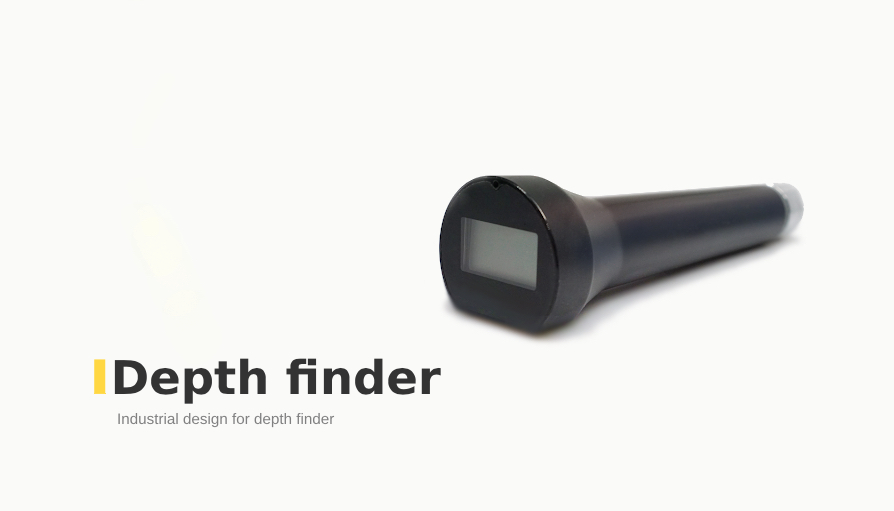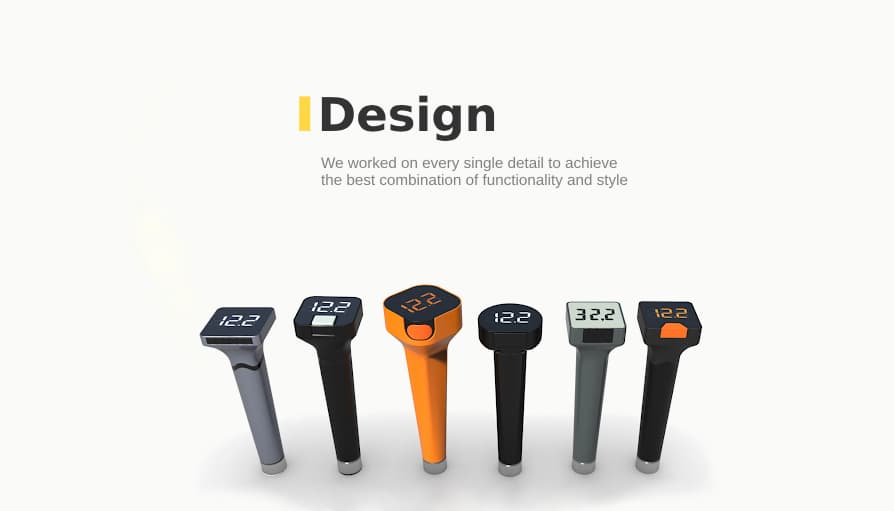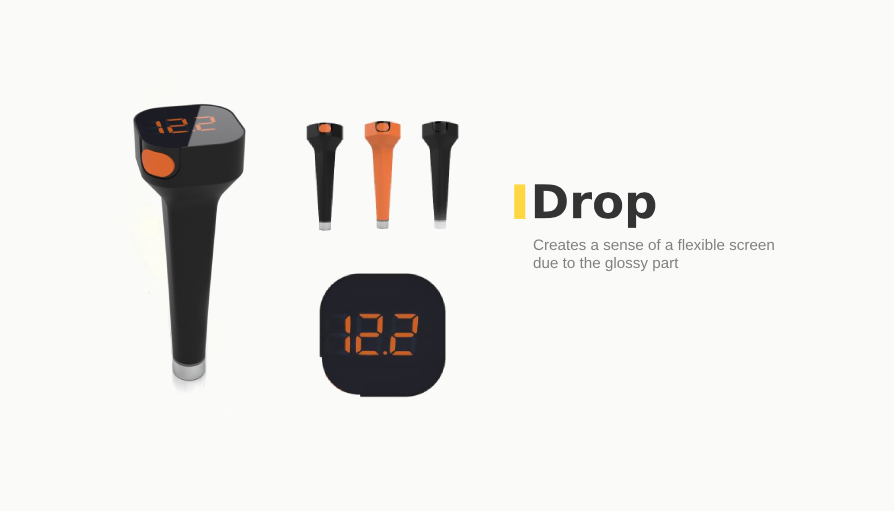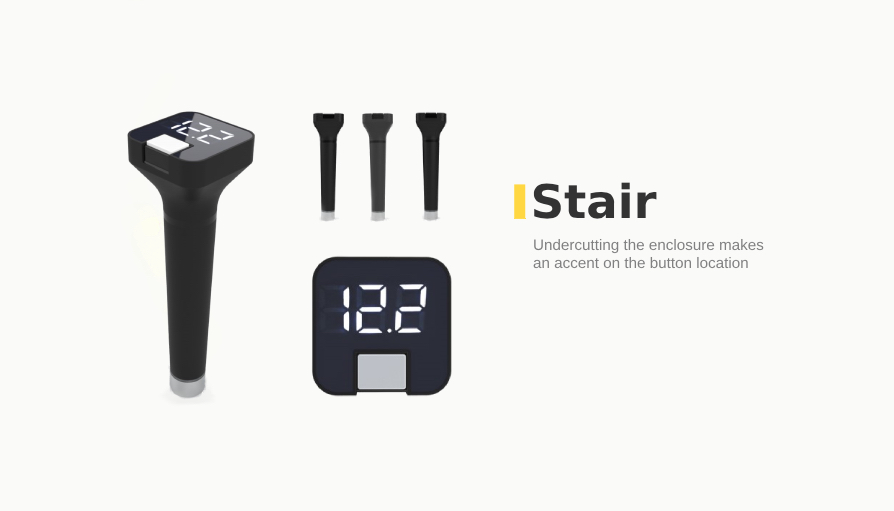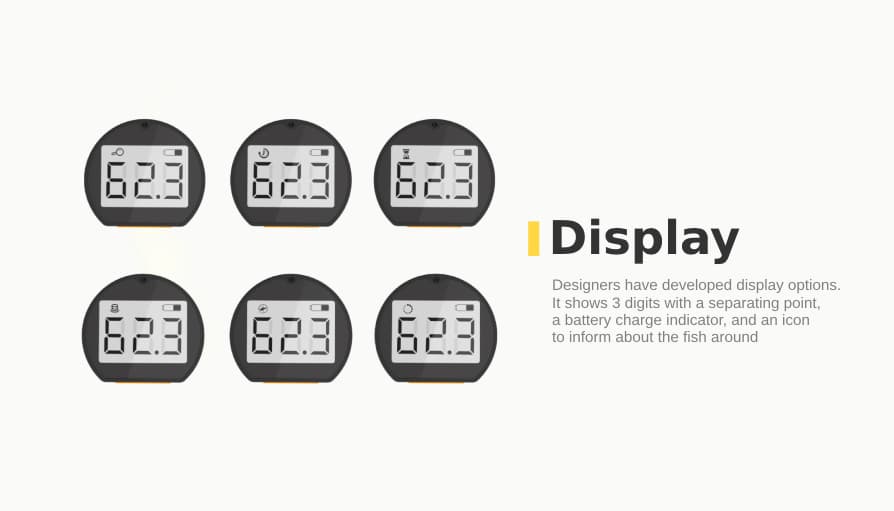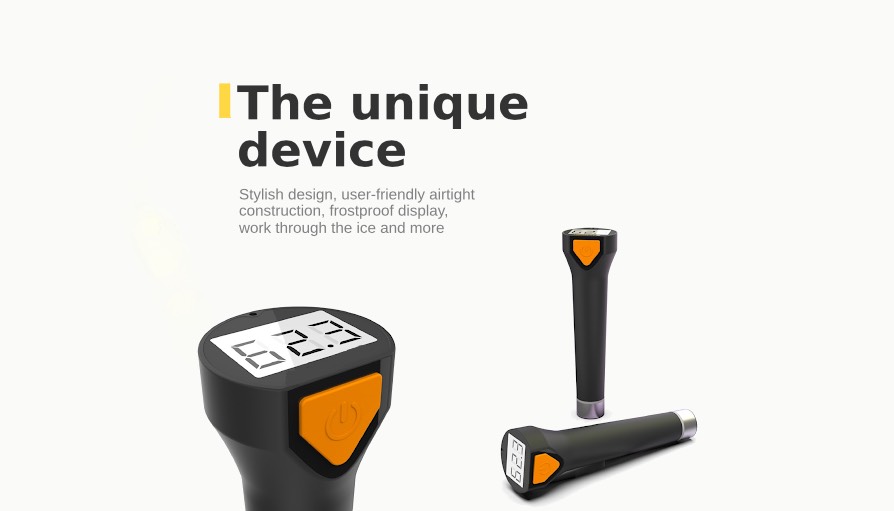Depth finder: industrial & mechanical design
Client
A European developer and manufacturer of test & measurement equipment, including portable fish finders, devices for amateur and professional fishing, and more.
Challenge
To design the enclosure of the new depth finder according to the customer's requirements for device characteristics and budget.
Solution
We helped the client to launch mass production of the depth finder enclosure. Our designers and constructors took into account the smallest details at all stages, from concept elaboration to prototyping and setting up production.
The buoyancy and tightness of the device allow measuring the depth at the desired point of the reservoir. It can be used in winter through ice or to measure water in wells. Also, the depth finder can measure the liquid level in vessels.
1. Concept development
Our designers have studied the customer's requirements and developed a device concept: the structural elements of the depth finder are fish finder, tube, main enclosure, top plate and glass. For the production of the tube we chose the extrusion method, which made the construction much cheaper.
The first sketches:
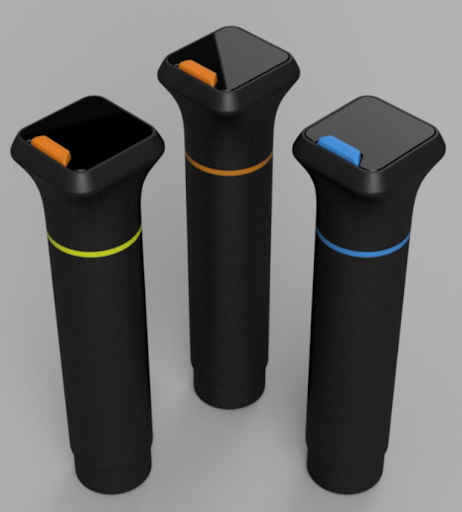
The first design concepts:
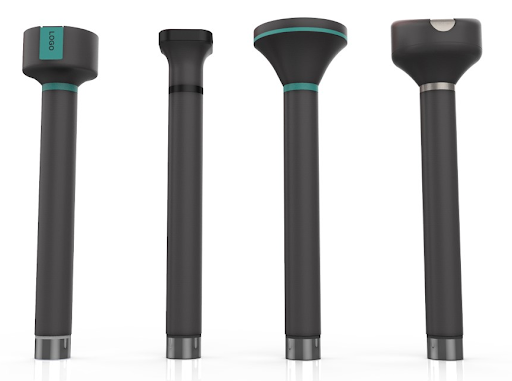
2. Industrial design
Further development of the concept allowed designers to greatly simplify the enclosure for manufacturing. Instead of the originally expected eleven details we left only three – the glass, button, and the enclosure.
At the same time, the customer specified some additional design and construction requirements:
- a cut on the enclosure that prevents the depth finder from rolling over the surface;
- convenient location of the control button for comfortable and secure grip with and without thick gloves;
- matching the customer's corporate style according to the the brand book (corporate colors, button outlines and display icons).
The designer implemented these requirements and proposed five new depth finder design options.
The second design concepts:
Moon: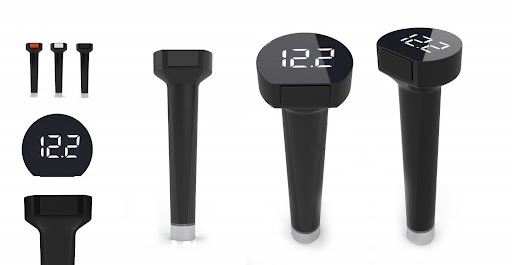
Solid: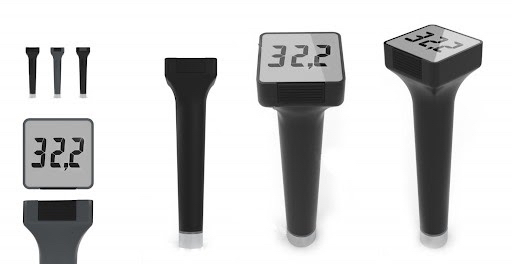
Tide:
We selected the Moon concept for further development. Its specific features are:
- Round shape headband with display.
- Location of the button on the side at the beveled point of the headband. Pressing with the thumb.
- The color of the enclosure is black.
- The color of the button is contrasting orange.
- The minimum molding angle due to the increased enclosure diameter.
- The lanyard hole is in front of the button.
At the same time, the designers worked on the display design options. It must show three digits with a separating point, a battery charge indicator, and an icon to indicate about fish around. To minimize the cost of the final product, the display is made in monochrome and without backlighting.
Final display design options:
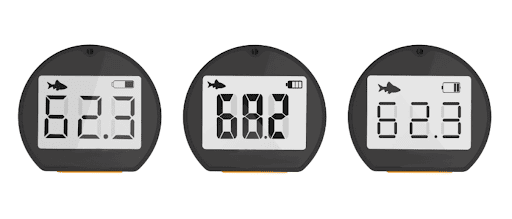
The designers and constructors have foreseen all the necessary requirements and agreed on the final design concept of the device. In the final stages, they reached the required roughness of the enclosure surface, adding a glossy one around the button. The final design is below on the picture.
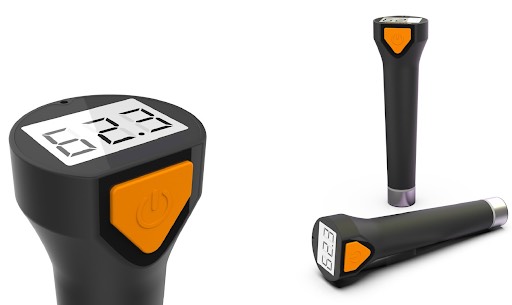

3D-model:

3. Prototyping
On the basis of the 3D model, we started to make a prototype of the depth finder using 3D printing technology. Some features of the process:
- the outer surface of the enclosure is painted with a spray paint with "soft-touch" effect to obtain its roughness;
- manufacturing of two stainless steel contact options: 0.5 mm thick and 0.8 mm thick to check the required stiffness;
- separate fabrication of the button from elastic polymer and its integration into the enclosure;
- production of 3D printing glass
- development of a board layout and a micro-button for it to check the product assemblability.
The first prototype (without soft-touch coverage):
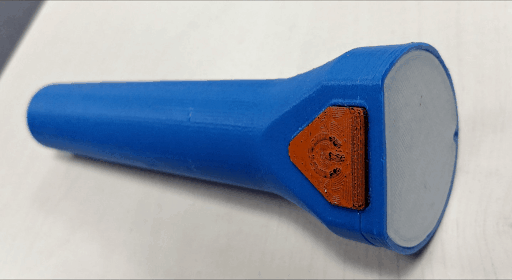
The customer also took part in the prototyping process. At his request, we made the necessary modifications and started to make the final prototype and to test it for assemblability in the production base of the Chinese partners.
The inner cavity with the mounting points of the board and contact:
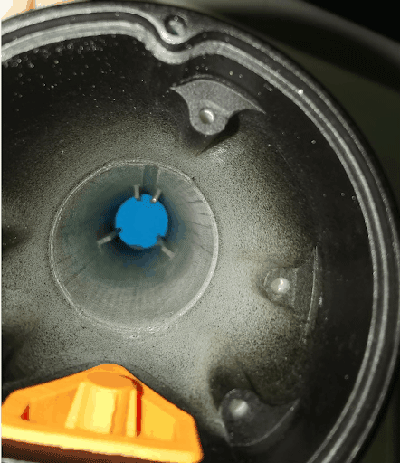
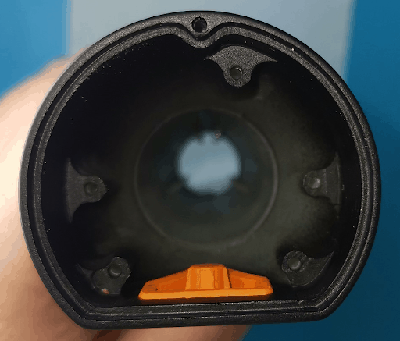
Final prototype:
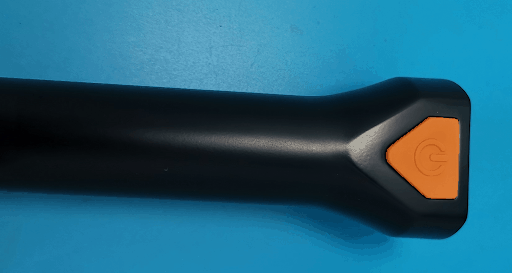
4. Manufacturing launch
The customer approved the final prototype and we began preparations for mass production. As a part of this stage, we produced tooling, molds for casting the housing from polymer and for the enclosure button, and also worked out options for fixing the protective glass.
For the button we have chosen the method of pouring elastic polymer into the cast body. This technology is called overmolding or two-component casting (the only difference is the equipment used). The main advantages of the technology are absolutely hermetic connection of two parts and absence of human factor.
The enclosure mold:


We also considered two options for fixing the protective glass:
- fixing with glue (there is a risk of error when applying glue during assembly)
- fixation to a special double-sided 3M tape. (risk of error is minimal).
We chose the second method, because the tape is glued to the inner surface around the glass perimeter conveniently and securely, and it is easy to transport thanks to the protective film. From a dozen different thicknesses and materials, we were able to choose the optimal one.
The first variant of pouring with elastic polymer of the button in comparison with the final one: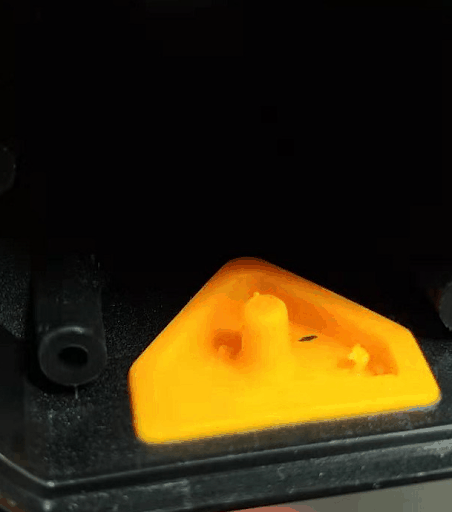
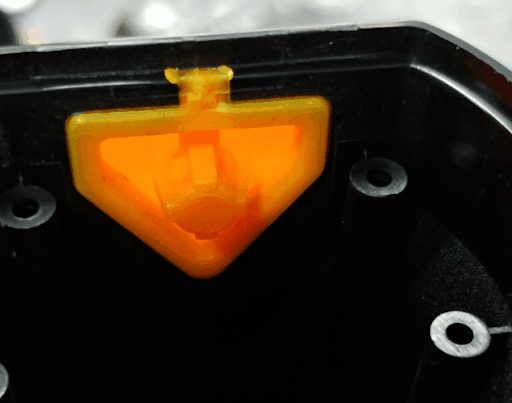
Ready-made working device:
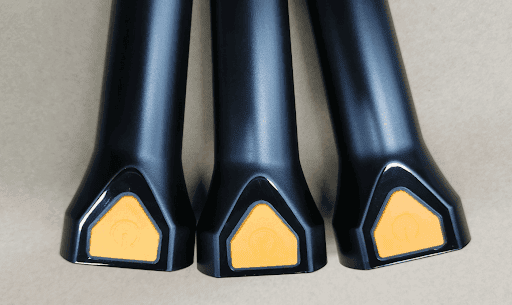
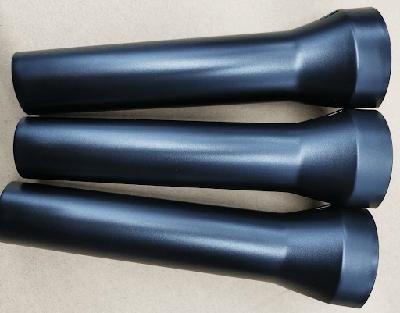
Business Value
The customer received a unique device for measuring the depth at a specific point of the reservoir, working even through the ice. Stylish design, convenient construction, frost-resistant display, buoyancy are just some of the many advantages of the device. We have released the first batch of 6000 units. They have successfully passed all possible tests, including one for tightness. The customer released a video presentation of the depth gauge and began selling.

